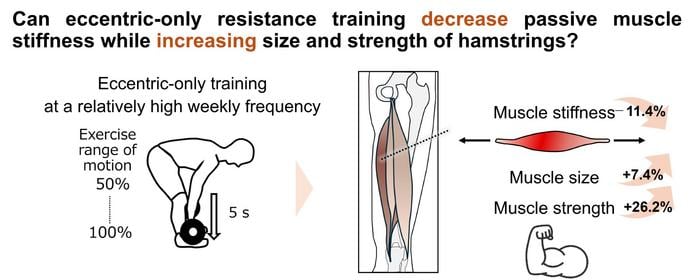New Study Challenges Conventional Wisdom on Weight Training
A new study from Doshisha University in Japan has found that a specific type of resistance training can lower passive muscle stiffness while simultaneously increasing muscle size and strength. This finding challenges the long-held belief that weight training inevitably leads to stiffer muscles.
The research, published in Medicine & Science in Sports & Exercise, focused on eccentric-only resistance training. This form of exercise emphasizes the muscle-lengthening phase of movements, such as the lowering portion of a deadlift.
Unexpected Benefits of High-Frequency Training
The study involved 36 young men divided into three groups. Two groups performed eccentric-only stiff-leg deadlifts at different weekly frequencies, while a control group did no exercise. After ten weeks, the group that trained three times per week showed a significant decrease in the stiffness of one specific hamstring muscle, the semimembranosus (SM), along with increases in its size and strength.
Assistant Professor Raki Kawama, who led the study, explained, “Our findings challenge the traditional belief that passive muscle stiffness could only be decreased through stretching. This study has revealed a training modality to chronically decrease the passive stiffness of a specific muscle while simultaneously increasing muscle strength and size.”
Why it matters: High passive muscle stiffness is associated with increased risk of injuries and reduced athletic performance in activities like long-distance running. This research suggests a potential new approach to training that could benefit both athletes and individuals in rehabilitation.
The study builds on previous research showing short-term reductions in muscle stiffness after certain types of training. However, this is the first to demonstrate long-term effects from resistance training. The researchers used a combination of eccentric contractions, long muscle lengths, and extended contraction duration in their protocol.
Passive muscle stiffness, which refers to the resistance a relaxed muscle offers to stretching, has been a topic of debate in sports science. While some degree of stiffness is necessary for optimal performance, excessive stiffness can lead to problems.
Dr. Kawama and his team measured muscle stiffness using shear moduli, a technique that assesses the elasticity of soft tissues. They also tracked changes in muscle volume and strength to provide a comprehensive picture of the training effects.
One limitation of the study is its focus on young male participants. Future research could explore whether these findings apply equally to other age groups and to women. Additionally, the study concentrated on the hamstring muscles, and it remains to be seen if similar effects occur in other muscle groups.
The researchers suggest that their findings could lead to improved training and rehabilitation programs. “In the next five to ten years, this new method could significantly improve the effectiveness of training and rehabilitation programs, leading to better outcomes for athletes and patients,” Prof. Kawama noted.
As the field of sports science continues to evolve, this study opens up new avenues for research into muscle adaptability and training techniques. It challenges practitioners to reconsider traditional approaches to flexibility and strength training, potentially leading to more effective and targeted exercise prescriptions.


